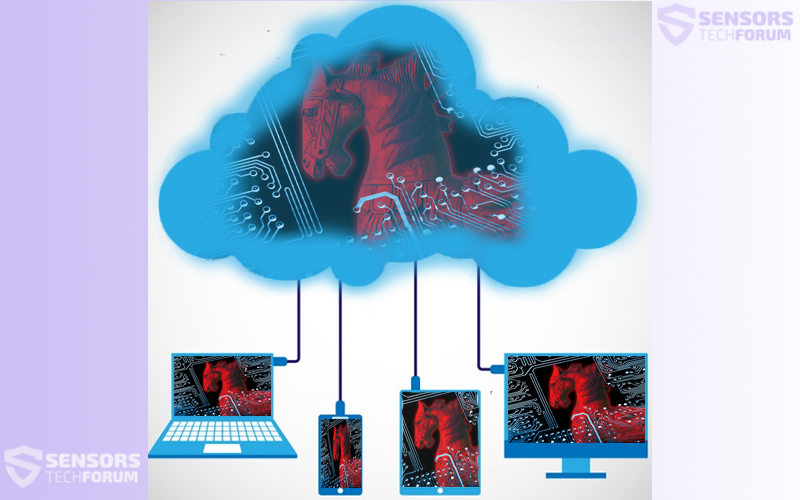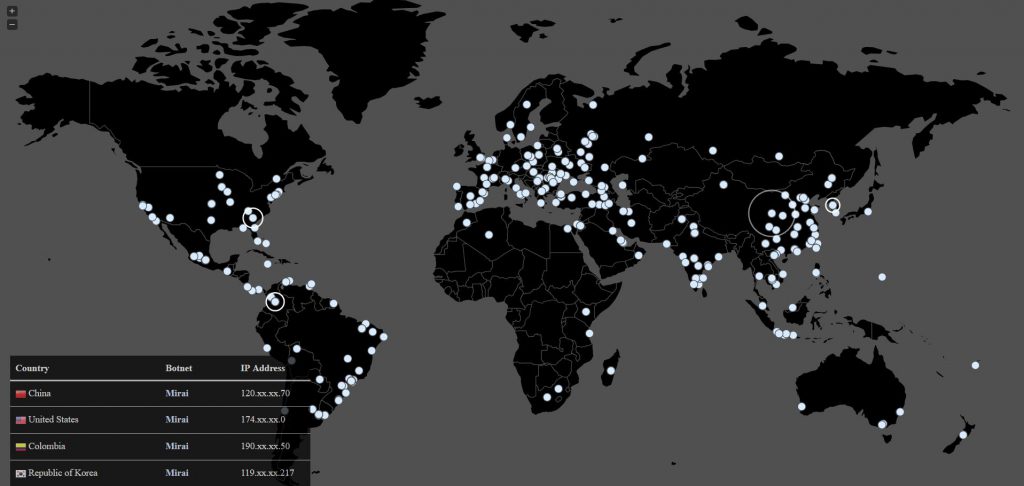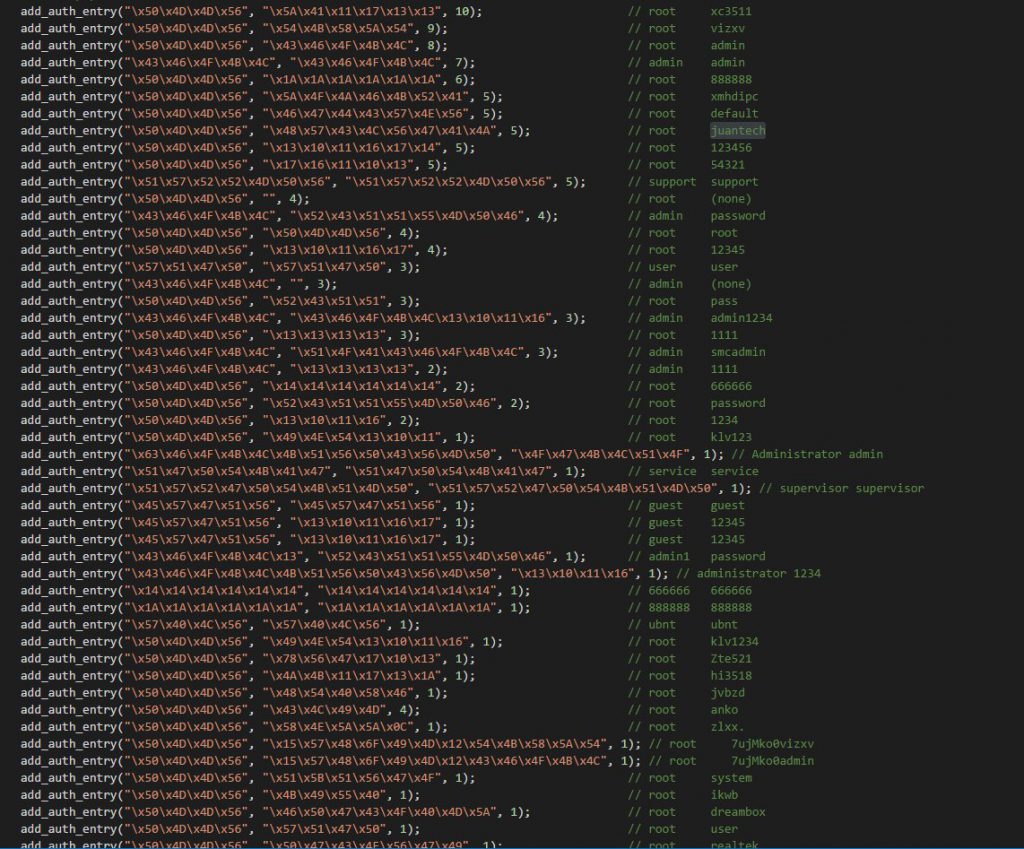 The notorious IoT(Internet of Things) botnet Mirai has seen a rapid rise in it’s global infection rate, malware researchers report. When the botnet first came out, nobody believed it will become this widespread, however after the hacker(s) creating it found no use of the botnet, they have dumped the malware online.
The notorious IoT(Internet of Things) botnet Mirai has seen a rapid rise in it’s global infection rate, malware researchers report. When the botnet first came out, nobody believed it will become this widespread, however after the hacker(s) creating it found no use of the botnet, they have dumped the malware online.
One particular hacker had the following message on deep web forums about this malware:
“When I first go in DDoS industry, I wasn’t planning on staying in it long. I made my money; there’re lots of eyes looking at IOT now, so it’s time to GTFO. So today, I have an amazing release for you. With Mirai, I usually pull max 380k bots from telnet alone. However, after the Kreb DDoS, ISPs been slowly shutting down and cleaning up their act. Today, max pull is about 300k bots, and dropping.”
Researchers at Intel MalwareTech (@malwaretechblog) have launched 400 sensors that constantly scan for Mirai real time infections and uploaded the live feed of it publicly. We have decided to let the host run for 5 minutes, and the results were shocking:
Mirai has managed to gather up to 100 infections in even less than five minutes. Since it’s open source code was released, this infection rate may only rise in the future. But this is not the biggest issue. The issue is that the Mirai virus’s purpose is to cause DDoS attacks and this is no joke. We have already seen a new rapid increase in the scale of DDoS attacks (up to 1TBps) oriented towards organizations. This is both a very lucrative opportunity for cyber-criminals and a very big issue for organizations who do not have relevant DDoS protection.
However, the release of Mirai may not be bad news after all. According to reports by Bryan (@Bry_Campbel) a malware researcher, Mirai targets weak credentials:
Such weak credentials can later be used to see what is the strength of passwords the virus tries to hack and react properly by using much stronger passwords. And this may not only help ISPs to “clean up their act” but it may also assist organization administrators to change crucial credentials and apply relevant DDoS protection against Mirai for the moment.

What This Means About The Future of IoT
The appearing and success of the Mirai botnet is a strong argument supporting the theory that IoT cyber-attacks are increasingly becoming a very real threat and the latest trend in malware infections. If one open-source botnet that is available to anyone can cause so many infections, we must think about the security of IoT if it is to be massively implemented in the future. Because there will soon be other IoT devices that will be released for the masses and there is other malware for IoT devices, besides DDoS botnets as well.
Preparation before removing Mirai.
Before starting the actual removal process, we recommend that you do the following preparation steps.
- Make sure you have these instructions always open and in front of your eyes.
- Do a backup of all of your files, even if they could be damaged. You should back up your data with a cloud backup solution and insure your files against any type of loss, even from the most severe threats.
- Be patient as this could take a while.
- Scan for Malware
- Fix Registries
- Remove Virus Files
Step 1: Scan for Mirai with SpyHunter Anti-Malware Tool



Step 2: Clean any registries, created by Mirai on your computer.
The usually targeted registries of Windows machines are the following:
- HKEY_LOCAL_MACHINE\Software\Microsoft\Windows\CurrentVersion\Run
- HKEY_CURRENT_USER\Software\Microsoft\Windows\CurrentVersion\Run
- HKEY_LOCAL_MACHINE\Software\Microsoft\Windows\CurrentVersion\RunOnce
- HKEY_CURRENT_USER\Software\Microsoft\Windows\CurrentVersion\RunOnce
You can access them by opening the Windows registry editor and deleting any values, created by Mirai there. This can happen by following the steps underneath:


 Tip: To find a virus-created value, you can right-click on it and click "Modify" to see which file it is set to run. If this is the virus file location, remove the value.
Tip: To find a virus-created value, you can right-click on it and click "Modify" to see which file it is set to run. If this is the virus file location, remove the value.Step 3: Find virus files created by Mirai on your PC.
1.For Windows 8, 8.1 and 10.
For Newer Windows Operating Systems
1: On your keyboard press + R and write explorer.exe in the Run text box and then click on the Ok button.

2: Click on your PC from the quick access bar. This is usually an icon with a monitor and its name is either “My Computer”, “My PC” or “This PC” or whatever you have named it.

3: Navigate to the search box in the top-right of your PC's screen and type “fileextension:” and after which type the file extension. If you are looking for malicious executables, an example may be "fileextension:exe". After doing that, leave a space and type the file name you believe the malware has created. Here is how it may appear if your file has been found:

N.B. We recommend to wait for the green loading bar in the navigation box to fill up in case the PC is looking for the file and hasn't found it yet.
2.For Windows XP, Vista, and 7.
For Older Windows Operating Systems
In older Windows OS's the conventional approach should be the effective one:
1: Click on the Start Menu icon (usually on your bottom-left) and then choose the Search preference.

2: After the search window appears, choose More Advanced Options from the search assistant box. Another way is by clicking on All Files and Folders.

3: After that type the name of the file you are looking for and click on the Search button. This might take some time after which results will appear. If you have found the malicious file, you may copy or open its location by right-clicking on it.
Now you should be able to discover any file on Windows as long as it is on your hard drive and is not concealed via special software.
Mirai FAQ
What Does Mirai Trojan Do?
The Mirai Trojan is a malicious computer program designed to disrupt, damage, or gain unauthorized access to a computer system. It can be used to steal sensitive data, gain control over a system, or launch other malicious activities.
Can Trojans Steal Passwords?
Yes, Trojans, like Mirai, can steal passwords. These malicious programs are designed to gain access to a user's computer, spy on victims and steal sensitive information such as banking details and passwords.
Can Mirai Trojan Hide Itself?
Yes, it can. A Trojan can use various techniques to mask itself, including rootkits, encryption, and obfuscation, to hide from security scanners and evade detection.
Can a Trojan be Removed by Factory Reset?
Yes, a Trojan can be removed by factory resetting your device. This is because it will restore the device to its original state, eliminating any malicious software that may have been installed. Bear in mind that there are more sophisticated Trojans that leave backdoors and reinfect even after a factory reset.
Can Mirai Trojan Infect WiFi?
Yes, it is possible for a Trojan to infect WiFi networks. When a user connects to the infected network, the Trojan can spread to other connected devices and can access sensitive information on the network.
Can Trojans Be Deleted?
Yes, Trojans can be deleted. This is typically done by running a powerful anti-virus or anti-malware program that is designed to detect and remove malicious files. In some cases, manual deletion of the Trojan may also be necessary.
Can Trojans Steal Files?
Yes, Trojans can steal files if they are installed on a computer. This is done by allowing the malware author or user to gain access to the computer and then steal the files stored on it.
Which Anti-Malware Can Remove Trojans?
Anti-malware programs such as SpyHunter are capable of scanning for and removing Trojans from your computer. It is important to keep your anti-malware up to date and regularly scan your system for any malicious software.
Can Trojans Infect USB?
Yes, Trojans can infect USB devices. USB Trojans typically spread through malicious files downloaded from the internet or shared via email, allowing the hacker to gain access to a user's confidential data.
About the Mirai Research
The content we publish on SensorsTechForum.com, this Mirai how-to removal guide included, is the outcome of extensive research, hard work and our team’s devotion to help you remove the specific trojan problem.
How did we conduct the research on Mirai?
Please note that our research is based on an independent investigation. We are in contact with independent security researchers, thanks to which we receive daily updates on the latest malware definitions, including the various types of trojans (backdoor, downloader, infostealer, ransom, etc.)
Furthermore, the research behind the Mirai threat is backed with VirusTotal.
To better understand the threat posed by trojans, please refer to the following articles which provide knowledgeable details.




